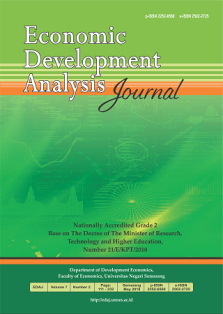Supply and Demand Analysis of Indonesia’s Subsidized Housing Program
Abstract
For a large proportion of Indonesian people, owning a home is merely a dream, especially since house prices continue to rise. Consequently, an increasing number of low-income people (MBR) are not able to own their own homes. This has encouraged the Indonesian Government to release the 13th Economic Policy Package, The Million House Program, and several other financing policies to help MBR obtain affordable housing. In this investigation, an analysis is conducted on the supply and demand of MBR housing in Indonesia. Policy development recommendations to decrease the size of the housing backlog are also provided. This research utilizes the panel data method to analyze data from 34 provinces in Indonesia over a period of 5 years, also by gathering primary data with FGD method toward the property business owners and authorized local government whose in charge in subsidized housing policy. The results illustrate that the human population is the sole factor that affects the growing demand for subsidized housing. Possible solutions to accommodate this increase in demand include a building rights title (HGB), like the financing scheme, and the development of flats, rather than individual housing methods.


